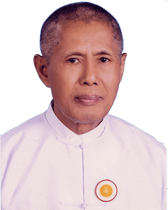25 Mar 2013 History & Geography
Shwedagon Pagoda in Yangon is one of the most recognizable features of Myanmar. It is hard to find a book or brochure that lacks at least one illustration of this magnificent landmark.

image source from: Christopher Voitus
It would be considered another architectural treasure of the Bagan period…if it were a Bagan-era monument. It is not. Was it built by the Konbaung kings, the predecessors of colonial Burma? No.
Shwedagon Pagoda, like a number of other architectural gems, belongs to the time of the Mon kingdom, one of Burma’s lesser known historical states.
The Mon kingdom can be considered the phoenix of Burma. It achieved significant influence during several periods of history, then fell, only to return later. Its name changed depending on the period, but it never lost the features that made it unique.
Older than Burma
Mon history predates Burmese history. It is said that Mon settlers arrived in the Irrawaddy area from the north at some point in the late first millennium BC. The Burmese settled in the area around the beginning of the ninth century AD, so it can be said that there was no Burma at that time.The early history of Mon statehood is still a mystery to the historians and archaeologists that research the period. It is believed that the first Mon kingdom was founded after 500 AD, but the estimated date is still debatable. Traditional Mon narratives place these events in the fourth century BC. By the ninth century AD, there was already a kingdom with a capital in Thaton. The state was called Ramannadesa at that time.
First Buddhists
The Mon kingdom was the first state in Burmese history to adopt Buddhism as the official religion. The Mon wrote manuscripts in their own language, preferring it to Sanskrit or Pali. The earliest version of Shwedagon Pagoda was also built in that period.An unsuccessful war with Bagan put an end to this period. In 1507, Thaton fell before the forces of King Anawratha and the land was absorbed into Bagan. For the next two centuries, the Mon-populated areas were a province of the biggest empire of classical Burma.
But when Bagan, in turn, was destroyed by the Mongols in 1287, the region did not hesitate to declare independence. Hatharwaddy Kingdom—this became the new name of the Mon state. The city of Thaton did not regain the status of capital. In the first decades, the king’s seat of power was at Martaban, but in 1363 the royal court was relocated to Pegu (modern-day Bago).
Prosperous Times
The kingdom prospered through trade in the following centuries. Many of Pegu’s great pagodas, temples, and payas were constructed in that period. Construction works took place in other parts of the country as well; Shwedagon Pagoda, for instance, was expanded by 15th-century rulers.Nevertheless, 16th-century Burma was going through a period of unification wars. The Mon kingdom did not avoid becoming part of the conflict and was brought down by the Toungoo dynasty in 1539.
However, the opportunity for a rematch came in the middle of the 18th century. Toungoo rule had been weakened by internal hardships and a coalition of Mon nobles revolted in 1740, restoring the Hatharwaddy Kingdom. The Toungoo dynasty fell to Harthwaddy in 1752 when the Mon sacked Inwa and put an end to their old foes.
Recaptured again
Independence was short-lived. The Konbaung, the successors of Toungoo, recaptured the Harthwaddy kingdom five years later.The Mon kingdom has a special place in Burma’s history, not just because it was one of the oldest. After all, there have been a number of ancient states within the country’s boundaries. However, most of them simply faded away. Only the Mon state faded and kept returning, like a phoenix.
More ideas on what to see and do in Mon State? Check out our list of top attractions in the region.
http://www.myanmarburma.com/blog/638/the-mon-people-became-a-true-phoenix-kingdom








0 comments :
Post a Comment